January Rollup
/
ScreenPipe: AI-Powered 24/7 Desktop Context for Developers
github.com
Author: mediar-ai
Date: January 1, 2025
Overview
- AI App Store Powered by Desktop History: Continuous 24/7 screen and mic recording stored 100% locally.
- Open Source, Dev-Friendly: Enables AI applications leveraging full desktop context.
- Minimal System Impact: Uses ~10% CPU, 4GB RAM, and 15GB/month.
Key Features
- Screen & Mic Recording: Everything is indexed into an API for AI-driven applications.
- Full-Text Search (FTS): Window and app names indexed for fast retrieval.
- AI Plugin System (“Pipes”):
- Develop AI-powered desktop apps using Next.js within a sandboxed Rust environment.
- Publish & Monetize: Sell through the built-in store with Stripe subscriptions.
- OCR & Multimodal Embeddings: Index MP4s using OCR and AI-based embeddings.
- Built-in Integrations: Works with different AI models and services.
How It Works
- Continuous Recording (Screen, Mic) → Local Storage & Indexing.
- AI Apps Query Indexed Data → Desktop Context Awareness.
- Dev Tools: Next.js-based plugins, CLI for setup & automation.
Installation #MacOS/Linux:
curl -fsSL get.screenpi.pe/cli | shscreenpipeHidden Gems in AWS Services
-
Networking & Access Management
- AWS CloudShell1 with VPC Support: Secure RDS access without jump hosts or Session Manager.
- IAM Roles Anywhere2: Use cryptographic certificates instead of long-lived IAM credentials.
- Cloud WAN3: Replaces Transit Gateway for global networking.
- CloudFront Functions4: Enables low-cost routing and session stickiness across Lambda functions.
- VPC Prefix Lists: Simplifies security group rules for dynamic IP access control.
-
Security & Governance
- Organizations SCPs & RCPs5: Enforce IAM security, prevent misconfigurations (e.g., blocking public S3 access).
- IAM Credential Report6: Audit IAM credentials across an entire AWS organization.
- Amazon Resource Explorer7: Consolidated view of AWS resources across an organization.
- AWS Budgets Alerts8: Proactive cost monitoring and enforcement.
- Centralized Root User Management9: Securely manage root account access across AWS Organizations.
-
Observability & Troubleshooting
- CloudTrail & VPC Flow Logs10: Essential for debugging and tracking changes.
- Reachability Analyzer11: Identifies network connectivity issues in VPCs.
- CloudWatch Log Insights12: Interactive log queries for better observability.
- Organizational CloudTrails + Glue + Athena13: Query logs across all accounts and regions from a single place.
-
Compute & Automation
- Step Functions14: Orchestrate workflows efficiently, often replacing Lambda.
- AWS Systems Manager State Manager15: Runs Ansible playbooks for automation.
- SSM Automations16: Perform multi-step AWS API calls and workflows.
- Amazon Application Recovery Controller17: Auto-shifts workloads from failing AZs.
- Auto Scaling with CloudFormation Signals18: Ensures seamless zero-downtime updates.
-
Storage & Data
-
Developer Productivity
- Boto3 + Custom Web Console22: Automate AWS tasks via Python for massive efficiency gains.
- Speedrun (AWS JavaScript SDK Power-up)23: Automates AWS workflows directly in GitHub markdown.
- checkip.amazonaws.com24: Simple API to check your public IP without third-party services.
- Amazon Workload Discovery25: Visualizes AWS architecture and resources.
-
Miscellaneous
Top 7 Agentic RAG System Architectures to Build AI Agents
linkedin.com
Author: Pankaj Singh
Date: February 19, 2025
- Agentic RAG (Retrieval-Augmented Generation + AI Agents) enhances AI systems by integrating dynamic knowledge retrieval, decision-making, and automated task execution.
- Why It Matters:
- Overcomes limitations of standard RAG (irrelevant retrievals, hallucinations, adaptability issues).
- Enables autonomous decision-making, adaptability, and multi-step reasoning.
- Supports applications like customer support, research assistance, workflow automation.
7 Types of Agentic RAG Systems
-
Agentic RAG Routers – Routes queries to appropriate retrieval/generation components.
- Single Router: One agent handles all routing.
- Multiple Routers: Distributed agents optimize retrieval and generation.
-
Query Planning Agentic RAG – Breaks down complex queries into subqueries, optimizes retrieval.
-
Adaptive RAG – Uses classifiers to decide whether single-step, multi-step, or no retrieval is needed.
-
Agentic Corrective RAG (CRAG) – Evaluates retrieved documents, corrects queries if needed, and integrates web search for better answers.
-
Self-Reflective RAG – AI agent self-assesses response quality, refines queries, and re-retrieves data dynamically.
-
Speculative RAG – Uses a small, fast model to draft answers and a larger model to verify and refine them.
-
Self-Route Agentic RAG – AI decides whether it has enough context to answer or if a long-context model is needed.
Comparison
- Standard RAG: Simple retrieval + generation, struggles with relevance.
- Self-Reflective RAG: Introduces self-evaluation and query refinement.
- Corrective RAG: Detects and corrects retrieval errors before generating answers.
- Speculative RAG: Uses two models for speed and accuracy balance.
- Self-Route RAG: Dynamically chooses retrieval or long-context processing.

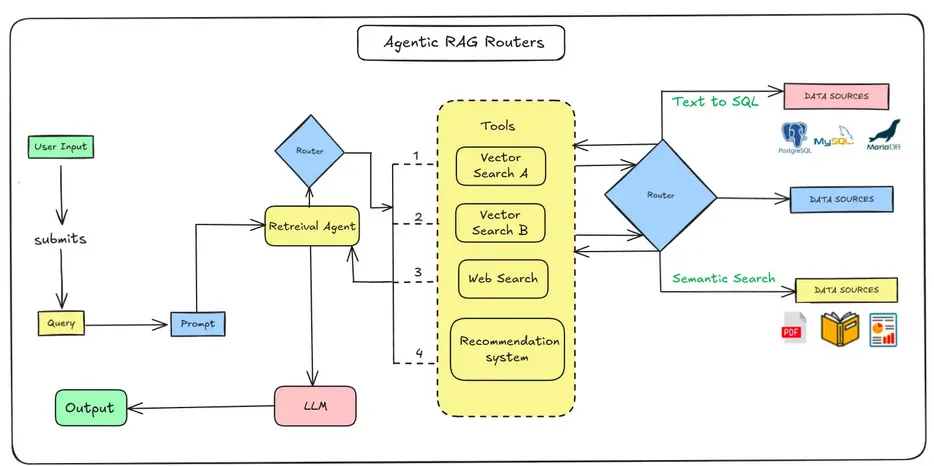

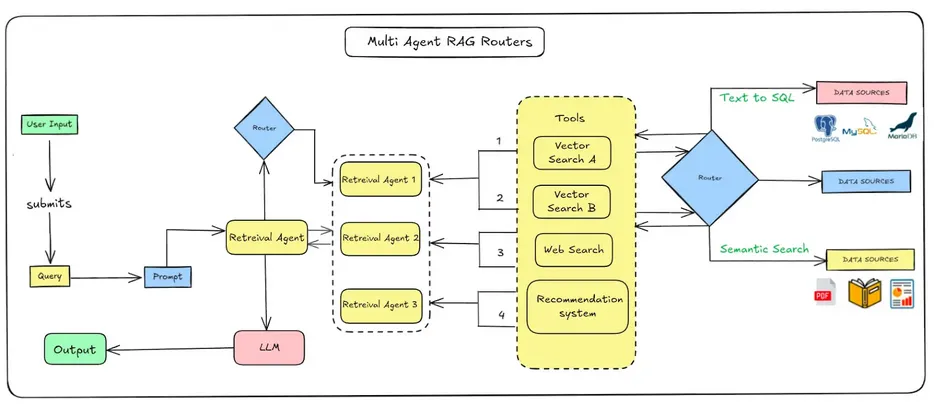
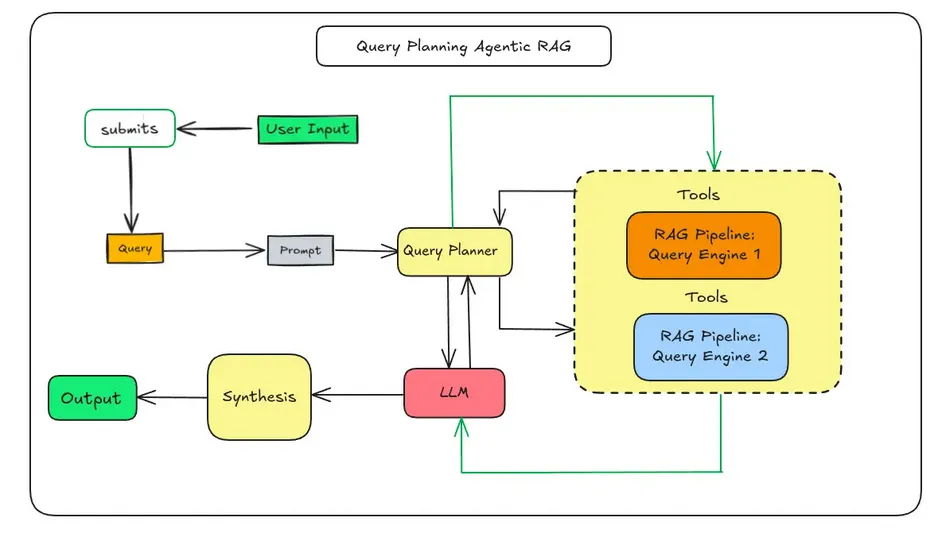
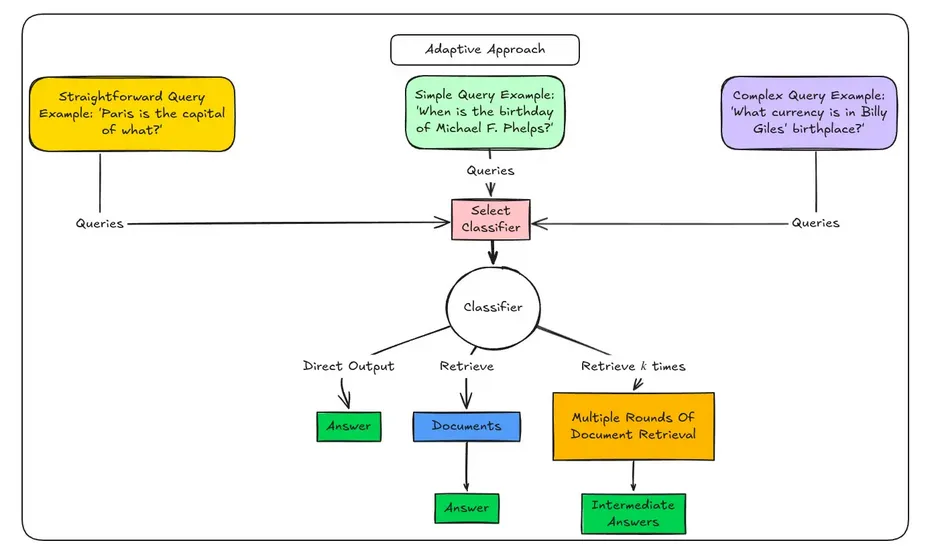

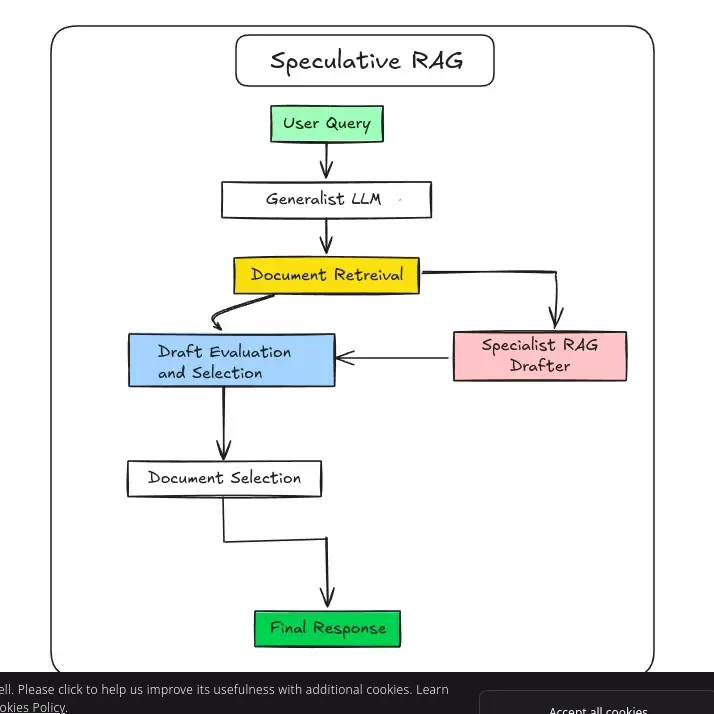
ScrapeGraphAI: AI-Powered Web Scraping API
- AI-Powered Web Scraping: Converts unstructured web content into structured JSON using natural language prompts.
- Core Services:
- SmartScraper: Extracts structured data from web pages.
- SearchScraper: Retrieves structured data from search queries.
- Markdownify: Converts webpages to markdown format.
- AI & LLM Integrations: Works with LangChain, LlamaIndex, and CrewAI for RAG workflows.
- SDKs & APIs: Official SDKs for Python, JavaScript, and TypeScript.
- Enterprise Features: Automatic proxy rotation, rate limiting, dedicated support.
- Pricing:
- Free tier: 100 credits, 10 requests/min.
- Starter ($20/mo): 5,000 credits, 30 requests/min.
- Growth ($100/mo): 40,000 credits, 60 requests/min.
- Pro ($500/mo): 250,000 credits, 200 requests/min.
- Enterprise: Custom pricing and features.
- Open Source & Community: 17K+ stars on GitHub, 9M+ pages scraped, 250K+ users.
- Notable Partners: AWS, NVIDIA, PostHog, LangChain, CodeBeaver.
Example Usage (Python SDK)
from scrapegraph.py import Client
client = Client(api_key="sgai-xxxxxx")
response = client.smartscraper( website_url="https://scrapegraphai.com/", user_prompt="Extract info about the company")print(response)Best Mobile Apps for Homelab Management
reddit.com
Author: Various
Date: January 1, 2025
Most Popular Apps
- Home Assistant – Centralized home automation control. Many users manage everything through HA.
- WireGuard & Tailscale – VPN solutions for remote access.
- Termius & Termux – SSH clients for managing servers from mobile.
- ProxMobo – Better mobile experience for managing Proxmox nodes.
- LunaSea – Sonarr/Radarr/Tautulli management with notification integration.
Homelab Server & Network Tools
- Plex, & Tautulli – Streaming media server and monitoring.
- Unraid & Synology Apps – Managing NAS and server storage.
- Pi-hole & AdGuard Home – DNS-level ad blocking.
- Uptime Kuma – Self-hosted uptime monitoring.
- Kubenav – Kubernetes cluster management.
- NGINX Proxy Manager & DNS Shortcuts – Easy access to services (e.g.,
radarr.lan).
Security & Remote Management
- OpenVPN & Cloudflare Tunnels – Alternatives to WireGuard/Tailscale.
- ServerCat – Mobile server monitoring and SSH.
- 1.1.1.1 & Twingate – Network security and Zero Trust access.
- LocalSend – Local file transfer tool.
- Cryptomator & Syncthing – Encrypted backups and real-time folder sync.
Additional Niche Tools
- Mealie & Paprika 3 – Recipe management.
- Scrypted – Apple HomeKit Secure video integration.
- IoTMQTTPanels Pro – MQTT data visualization.
- Prologue & Symfonium – Audiobook and music playback.
- Hurricane Electric Network Tools – Network diagnostics.
Intelligent Agents: Capabilities, Failures, and Evaluation
huyenchip.com
Author: Chip Huyen
Date: January 7, 2025
- Agents Defined: Entities that perceive their environment and act upon it. AI agents rely on tools to extend their capabilities. Defined by Stuart Russell & Peter Norvig in Artificial Intelligence: A Modern Approach (1995).
- Key Components: Tools (knowledge augmentation, capability extension, write actions) and planning (task decomposition, execution strategies, reflection, error correction).
- Failure Modes:
- Planning failures: Invalid tool usage, incorrect parameters, goal failure.
- Tool failures: Incorrect execution, translation errors.
- Efficiency issues: High API cost, excessive steps, long execution time.
- Tool Selection Challenges: More tools improve versatility but increase complexity. Chameleon (Lu et al., 2023)29 showed that tool augmentation can significantly boost accuracy in science and math benchmarks.
- AI Planning Debates: Autoregressive models struggle with complex planning. Meta’s Yann LeCun (2023) argues LLMs can’t inherently plan; others suggest combining LLMs with search and state tracking30.
- Evaluation Metrics:
- Success rate of valid plans.
- Error rates in tool execution.
- Average steps, cost, and latency per task.
- Emerging Research:
- Chameleon (Lu et al., 2023)29: AI-powered agent with tool-based augmentation improves task accuracy.
- Reflexion (Shinn et al., 2023)31: Agents with built-in error correction outperform static models.
- Vogager (Wang et al., 2023)32: AI agents dynamically acquiring new skills using a skill manager.
- ReAct Framework (Yao et al., 2022)30: Interleaving reasoning and actions for more robust AI agents.
Tools and References
How GPT-4o Solved a Hard Image Detection Problem
olup-blog.pages.dev
Author: Loup Topalain
-
Initial Challenge:
- Museum needed an app to match visitor snapshots of car illustrations to database images.
- 350 nearly identical side-view car illustrations created extreme difficulty.
- AR-based tracking was infeasible; traditional classifiers struggled with accuracy.
-
Embedding-Based Approach:
-
GPT-4o for Final Disambiguation:
- Top 3 KNN results sent to GPT-4o35 for final selection.
- LLM compared candidate images, resolving subtle variations better than embeddings alone.
- Result: More reliable image matching, reducing heuristic dependencies.
-
Key Outcomes:
- Eliminated manual heuristics for similarity scores.
- Lower costs & improved accuracy vs. previous embedding-only methods.
- Broader implications: Using LLMs for search re-ranking, OCR, and categorization beyond chat.
How Bluesky Works
newsletter.systemdesign.one
Author: Neo Kim
Date: January 22, 2025
Bluesky Architecture & ATProto
- Bluesky is built on Authenticated Transfer Protocol (ATProto) 36, a decentralized open-source framework.
- Uses a federated architecture similar to email—servers communicate over HTTP while being independently run.
- Users retain their social graph across multiple ATProto-based apps.
Data Storage & Retrieval
- SQLite repositories store user data, encoded in CBOR for efficiency.
- Data servers act as intermediaries, managing authentication and updates.
- Index servers (Go + ScyllaDB 37) aggregate user activity (likes, comments, reposts) for efficient retrieval.
- Redis caching 38 optimizes read-heavy operations.
Post Distribution & Feed Generation
- Crawler subscribes to updates, collecting user actions via websockets.
- Feed generator filters and ranks content using custom logic; 50K+ custom feeds exist.
- Cursor-based pagination enables efficient timeline navigation.
Moderation & Content Labeling
- Moderation service assigns content labels, stored in the index server.
- User-controlled preferences determine visibility of labeled content.
- Rate-limiting (HTTP 429 39) and trust-based server scaling prevent abuse.
Scalable Graph Storage for Social Proof
- In-memory graph service tracks follows, initially using Redis Sets, later optimized with Roaring Bitmaps 40.
- Set intersection techniques improve follow-related queries.
Short Video Support
- HTTP Live Streaming (HLS 41) adapts quality dynamically.
- CDN caching reduces bandwidth costs.
- Session tracking via playlist requests logs video engagement.
Quality Attributes
- Merkle trees 42 ensure data integrity.
- zstd compression 43 for WebSockets improves performance.
- Read-after-write consistency guarantees profile updates reflect immediately.
- Request coalescing prevents thundering herd issues.
Hydro: Cloud-Native Distributed Programming for Rust
- Hydro Framework: Distributed programming model in Rust, ensuring correctness in distributed applications similar to Rust’s memory safety.
- Dataflow Programming:
- Uses streams instead of RPCs or actors.
- Operators like
map,fold,joinprocess asynchronous streams. - Distinguishes bounded vs. unbounded streams via type system.
- Deployment Model:
- Two-stage compilation generates per-machine binaries.
- Uses Hydro Deploy for local or cloud deployment.
- Distributed Execution:
- Supports multi-process and multi-cluster execution.
- Example:
send_bincode()transfers data between processes.
- Scaling with Clusters:
Clustertype enables parallel execution across multiple nodes.round_robin_bincode()distributes data evenly across nodes.
- Comparison:
- Similar to Spark, Flink, Pandas but optimized for real-time, event-driven distributed processing.
- Dependencies:
Footnotes
-
AWS CloudShell – Cloud-based shell with VPC support. ↩
-
IAM Roles Anywhere – Secure role assumption for on-prem systems. ↩
-
AWS Cloud WAN – Global networking service. ↩
-
CloudFront Functions – Edge compute for request/response modification. ↩
-
Data Perimeters with AWS RCPs – Security policies to restrict resource access. ↩
-
IAM Credential Report – Organization-wide IAM credential audit. ↩
-
AWS Resource Explorer – Unified resource visibility across AWS accounts. ↩
-
AWS Budgets – Cost tracking and alerts. ↩
-
AWS Root User Management – Secure root account access across AWS Organizations. ↩
-
AWS CloudTrail – Logging AWS API activity for security and compliance. ↩
-
AWS Reachability Analyzer – Network path analysis tool. ↩
-
CloudWatch Log Insights – Query logs interactively in CloudWatch. ↩
-
CloudTrail + Athena – Centralized AWS log querying. ↩
-
AWS Step Functions – Serverless orchestration service. ↩
-
AWS Systems Manager State Manager – Automate operational tasks. ↩
-
AWS SSM Automations – Multi-step AWS task execution. ↩
-
Amazon Application Recovery Controller – Automated failover management. ↩
-
CloudFormation Auto Scaling – Zero-downtime updates via CloudFormation. ↩
-
Amazon FSx – File system service with performance tuning. ↩
-
S3 Batch Operations – Bulk processing for S3 objects. ↩
-
AWS SSM Parameter Store – Free secrets storage alternative. ↩
-
Speedrun GitHub – AWS automation directly in markdown. ↩
-
checkip.amazonaws.com – Simple API to check public IP. ↩
-
AWS Workload Discovery – Visualize AWS architectures. ↩
-
Amazon DCV – High-performance remote desktop solution. ↩
-
AWS Wickr – Secure messaging for enterprises and government. ↩
-
AWS Chime SDK – Build real-time communication applications. ↩
-
Chameleon (Lu et al., 2023) – AI agent augmented with 13 tools to enhance performance. ↩ ↩2
-
ReAct Framework (Yao et al., 2022) – Interleaving reasoning and actions for more robust AI agents. ↩ ↩2
-
Reflexion (Shinn et al., 2023) – Self-improving agents with iterative feedback loops. ↩
-
Vogager (Wang et al., 2023) – AI agents dynamically acquiring new skills. ↩
-
VGG16 Model – Classic deep learning model for image feature extraction. ↩
-
Bluesky and the AT Protocol – Decentralized social networking framework. ↩
-
Rate Limits – Explanation of HTTP 429 responses. ↩
-
Roaring Bitmaps – Compressed bitmaps for fast set operations. ↩
-
Merkle Trees – Data integrity verification technique. ↩